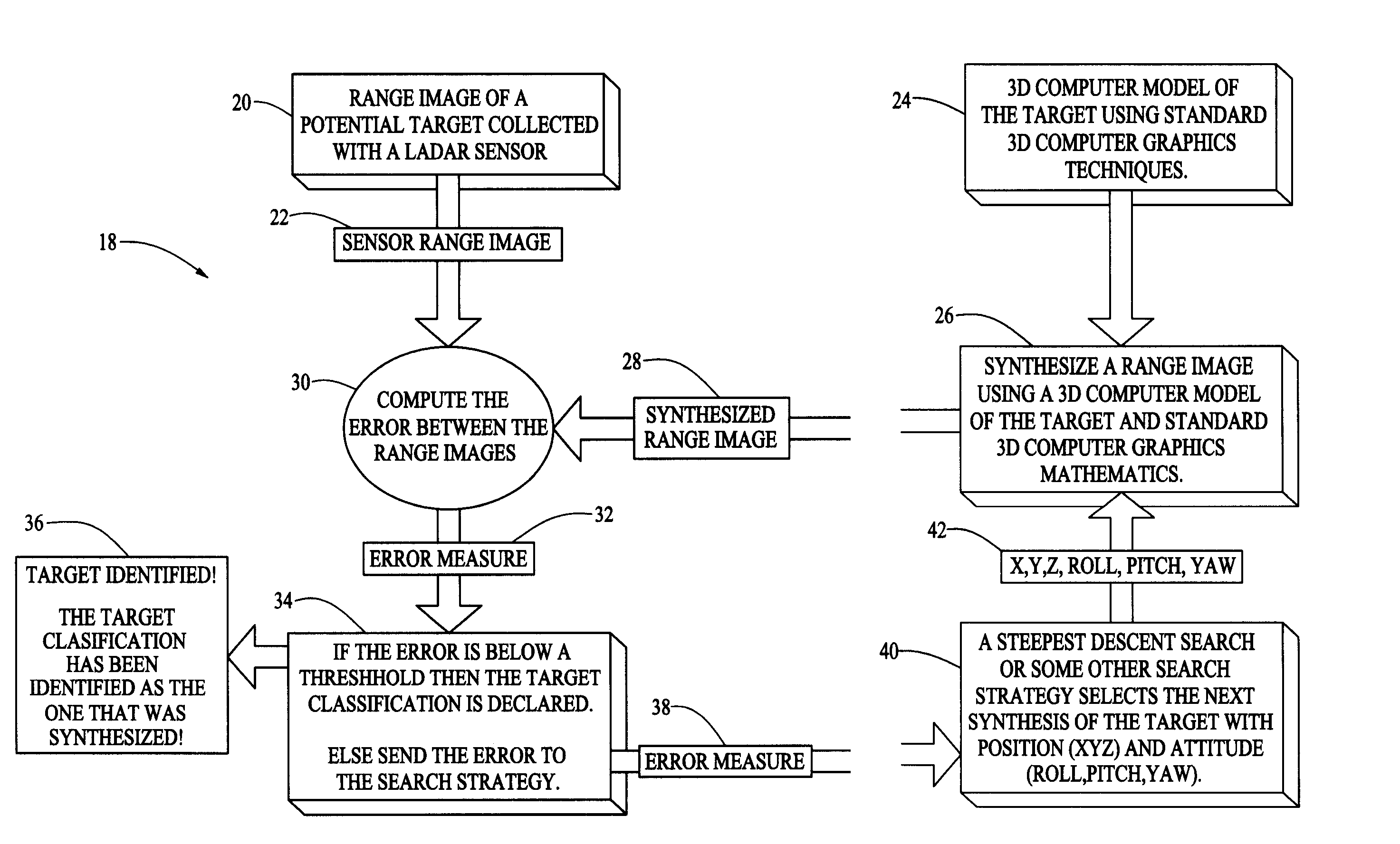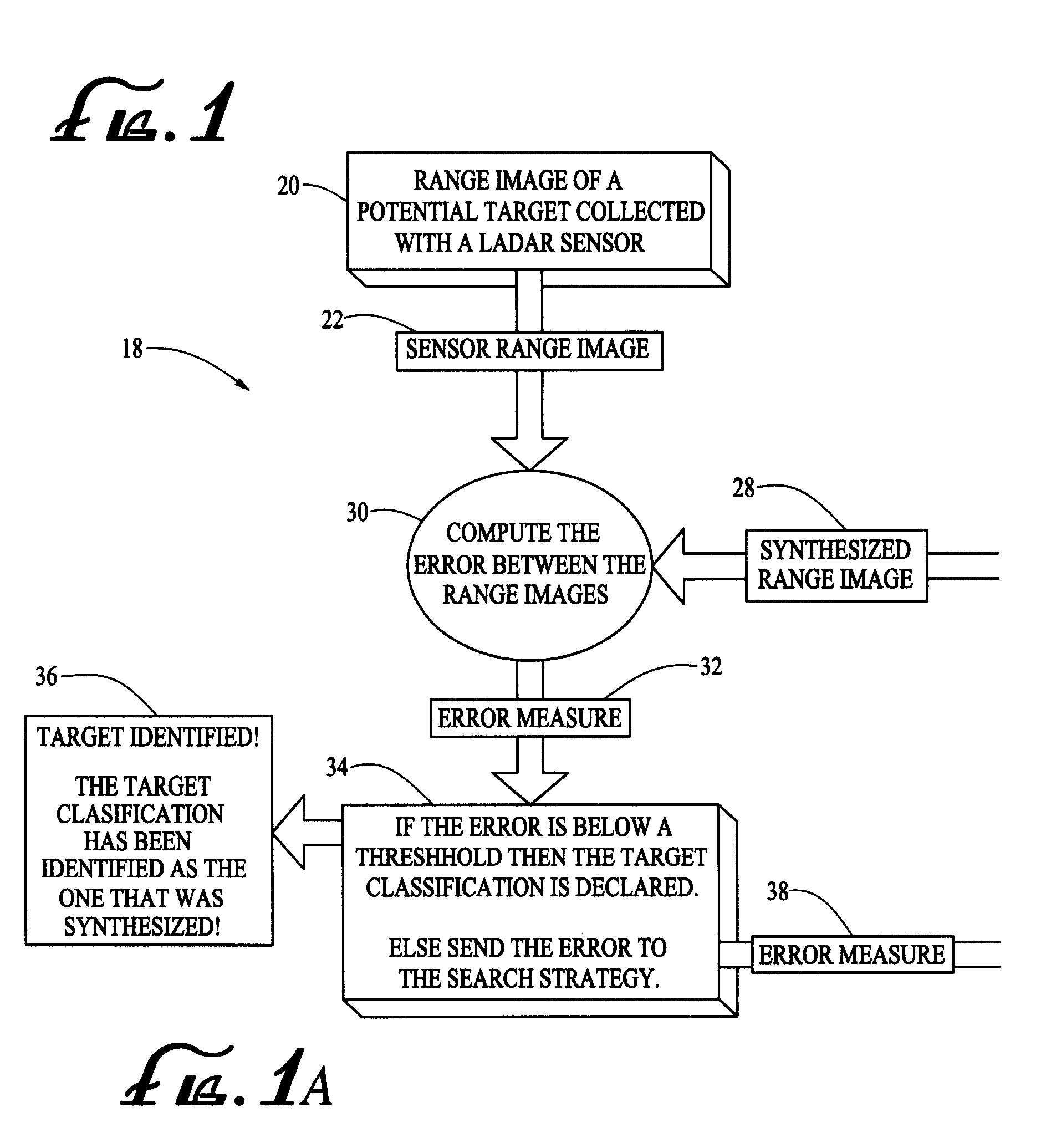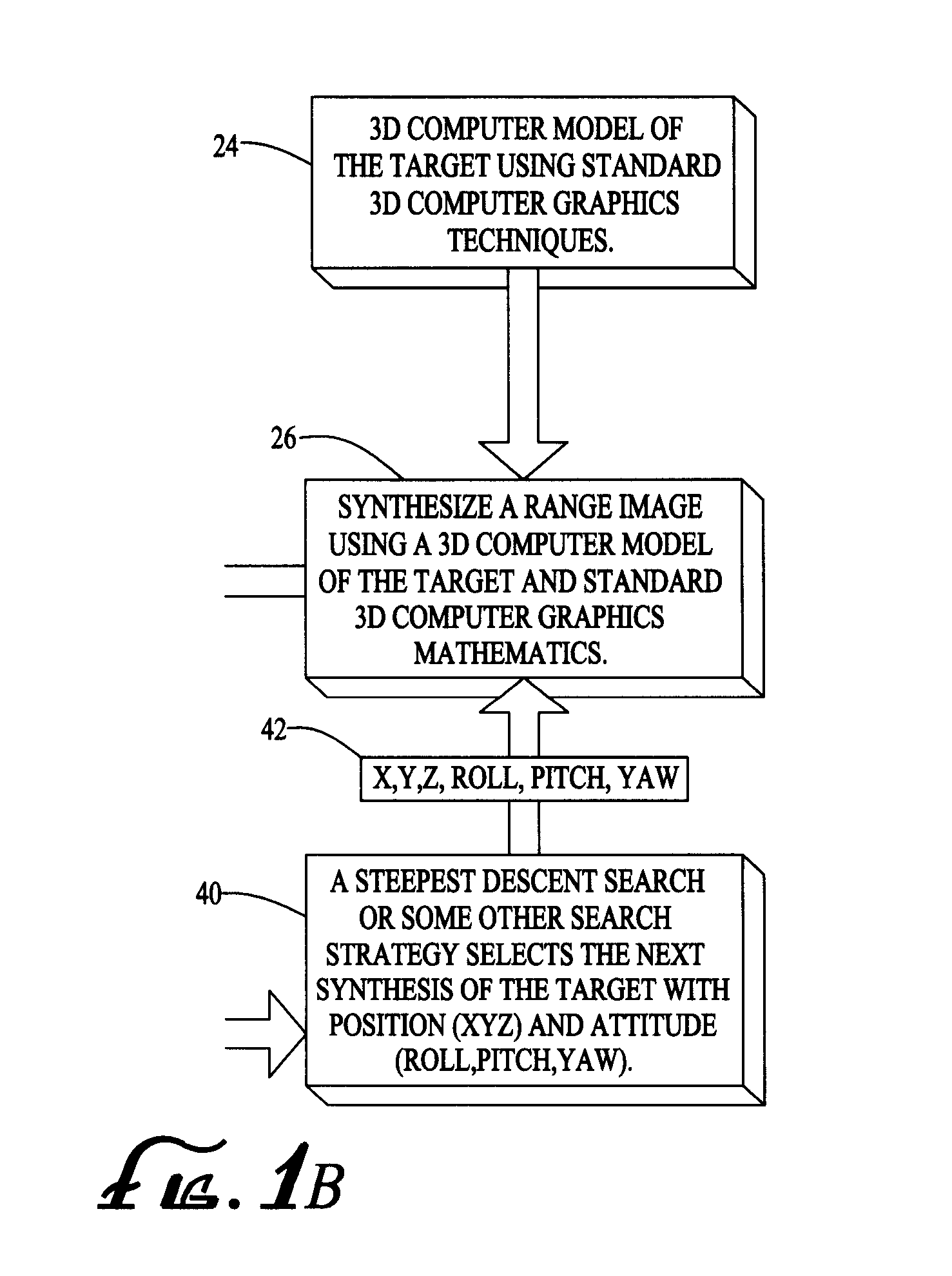Three dimensional shape correlator
a correlator and three-dimensional technology, applied in the field of target recognition, can solve the problems of inaccurate and untimely target recognition, and achieve the effect of high effective, accurate and efficient target recognition, and fast processing speed
- Summary
- Abstract
- Description
- Claims
- Application Information
AI Technical Summary
Benefits of technology
Problems solved by technology
Method used
Image
Examples
Embodiment Construction
[0023]Referring to FIG. 1, a scan of Ladar data is obtained from a Ladar sensor on board an aircraft or another military vehicle. The range image of a potential target, such as a tank or military vehicle is collected from the Ladar data provided by the Ladar source (program step 20 of flow chart 18).
[0024]At this time it should be noted that LADAR (laser detection and ranging) is an optical remote sensing technology which measures scattered light to find range and / or other information about a distant target. Normally Ladar uses laser pulses to determine distance to an object or surface. Like the similar radar technology, the range to an object is determined by measuring the time delay between transmission of a pulse and detection of the reflected signal.
[0025]Next, the Sensor range image of a potential target is MACH filtered to find detection points for the target in the Ladar data (program step 22). MACH filters also referred to as maximum height correlation filters are correlatio...
PUM
 Login to View More
Login to View More Abstract
Description
Claims
Application Information
 Login to View More
Login to View More - R&D
- Intellectual Property
- Life Sciences
- Materials
- Tech Scout
- Unparalleled Data Quality
- Higher Quality Content
- 60% Fewer Hallucinations
Browse by: Latest US Patents, China's latest patents, Technical Efficacy Thesaurus, Application Domain, Technology Topic, Popular Technical Reports.
© 2025 PatSnap. All rights reserved.Legal|Privacy policy|Modern Slavery Act Transparency Statement|Sitemap|About US| Contact US: help@patsnap.com



